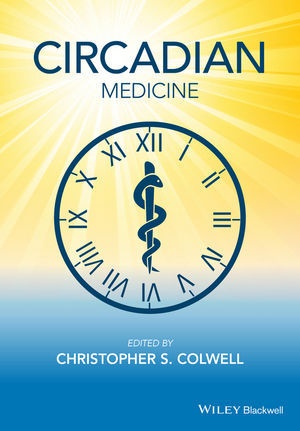Read more
Circadian rhythms, the biological oscillations based around our 24-hour clock, have a profound effect on human physiology and healthy cellular function.
List of contents
List of Contributors xiii
Preface xvii
Part I Fundamental Concepts 1
1 Cytosolic and Transcriptional
Cycles Underlying Circadian Oscillations 3
Michael H. Hastings and John S. O'Neill
1.1 Introduction 3
1.2 Assembling the transcriptional feedback loop 5
1.3 Keeping the transcriptional clockworks in tune 9
1.4 Building posttranslational mechanisms into the circadian pacemaker 13
1.5 Is the transcriptional clock paramount? 15
1.6 Conclusion: cytoscillators, clocks and therapies 18
References 18
2 Molecular Determinants of Human Circadian Clocks 25
Steven A. Brown
2.1 Molecular elements of human clocks: a brief review 25
2.2 Peripheral and central clocks 26
2.3 Signaling to peripheral circadian clocks 28
2.4 Human peripheral and central clocks 29
2.5 Human genetics 29
2.6 Technologies for measurement of human circadian clocks 30
2.7 Cellular methods 30
2.8 Omics?]based methods to analyze human clocks 32
2.9 Summary and outlook 33
References 33
3 The Suprachiasmatic Nucleus (SCN): Critical Points 37
Christopher S. Colwell, Paul Witkovsky, and Rae Silver
3.1 SCN is site of master circadian pacemaker in mammals 37
3.2 SCN receives photic information through a specialized light detection pathway 39
3.3 SCN neurons are endogenous single cell oscillators that generate rhythms in neural activity 40
3.4 The SCN has circuit level organization that is just beginning to be unraveled 42
3.5 Coupling with the SCN circuit is mediated by a set of peptides with VIP on top of the hierarchy 44
3.6 SCN outputs 44
3.7 SCN in aging and disease 50
References 51
4 Sleep and Circadian Rhythms: Reciprocal Partners in the Regulation of Physiology and Behavior 57
Ralph Mistlberger
4.1 Introduction 57
4.2 What is sleep 59
4.3 Circadian regulation of sleep 60
4.4 Reciprocity: sleep-wake feedback to the circadian clock 69
4.5 Conclusions: Circadian clocks and sleep are intertwined processes 73
References 73
5 Circadian Regulation of Arousal and its Role in Fatigue 81
David R. Bonsall and Mary E. Harrington
5.1 Defining arousal 81
5.2 Brain structures important for arousal 83
5.3 Neurochemicals signaling the states of arousal 84
5.4 Circadian regulation of the arousal system 86
5.5 Influence of input pathways on circadian regulation of arousal 88
5.6 Sustained states of fatigue: a disorder of the arousal network? 88
5.7 Conclusions 90
References 91
Part II Circadian Regulation of Major Physiological Systems 95
6 Physiology of the Adrenal and Liver Circadian Clocks 97
Alexei Leliavski and Henrik Oster
6.1 Introduction 97
6.2 Circadian control of adrenal function 98
6.3 Circadian control of liver function 101
6.4 Conclusion 105
References 105
7 Nutrition and Diet as Potent Regulators of the Liver Clock 107
Yu Tahara and Shigenobu Shibata
7.1 Introduction 107
7.2 Food is a "zeitgeber": The FEO in the brain 107
7.3 The FEO in peripheral tissues 109
7.4 What should we eat? What types of food can stimulate the peripheral clock? 110
7.5 When should we eat? Application to human life science 112
7.6 Circadian rhythm and obesity and diabetes 113
References 116
8 The Cardiovascular Clock 119
R. Daniel Rudic
8.1 Introduction 119
About the author
Christopher S. Colwell is a neuroscientist and Professor in the Department of Psychiatriary and Biobehavioral Sciences at the University of California, Los Angeles.
Summary
Circadian rhythms, the biological oscillations based around our 24-hour clock, have a profound effect on human physiology and healthy cellular function.

